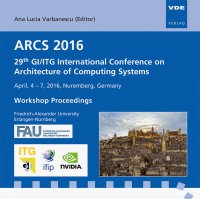Distributed Multi-Core Development in the Automotive Domain – A Practical Comparison of ASAM MDX vs. AUTOSAR vs. AMALTHEA
Konferenz: ARCS 2016 - 29th International Conference on Architecture of Computing Systems
04.04.2016 - 07.04.2016 in Nürnberg, Deutschland
Tagungsband: ARCS 2016
Seiten: 8Sprache: EnglischTyp: PDF
Persönliche VDE-Mitglieder erhalten auf diesen Artikel 10% Rabatt
Autoren:
Sailer, Andreas; Schmidhuber, Stefan; Mottok, Juergen (Laboratory of Safe and Secure Systems (LaS3), Ostbayerische Technische Hochschule (OTH) Regensburg, 93053 Regensburg, Germany)
Hempe, Maximilian; Deubzer, Michael (Timing-Architects Embedded Systems GmbH, Franz-Mayer-Str. 1, 93053 Regensburg, Germany)
Inhalt:
In the automotive domain, software for electronic control units is typically developed in a distributed environment. Software components originating from different suppliers have to be integrated by the car manufacturer into one system. To make such an integration step manageable, different description techniques emerged over the years, which describe the software architecture and their interfaces. This way the car manufacturers can exchange necessary information during the development process with their suppliers and vice versa without revealing know-how. To give an overview on the state-of-the-art of distributed multi-core development in the automotive industry, we present a comparison of three standards commonly used in this domain: ASAM MDX, AUTOSAR, and AMALTHEA. Not only are the defined system models of each standard compared with each other, but also their methodology and reference implementation. A case study about consolidating software functions between car manufacturers and their suppliers shows the application of each standard within an actual industrial multi-core project and highlights strengths as well as limitations of the aforementioned solutions.


